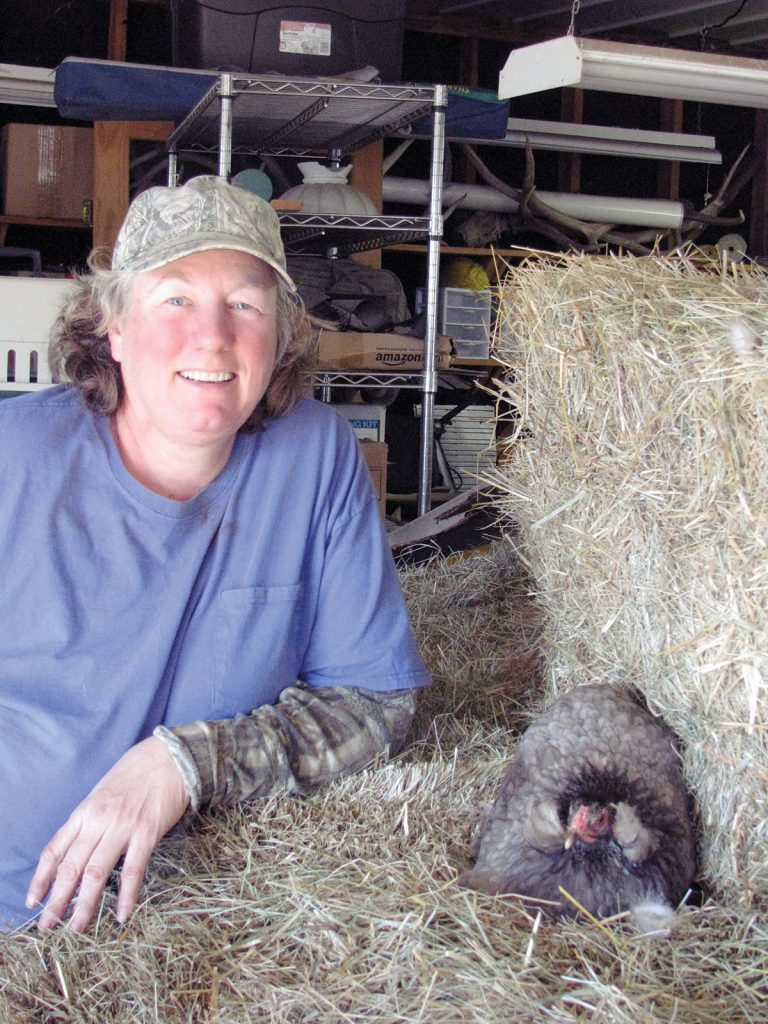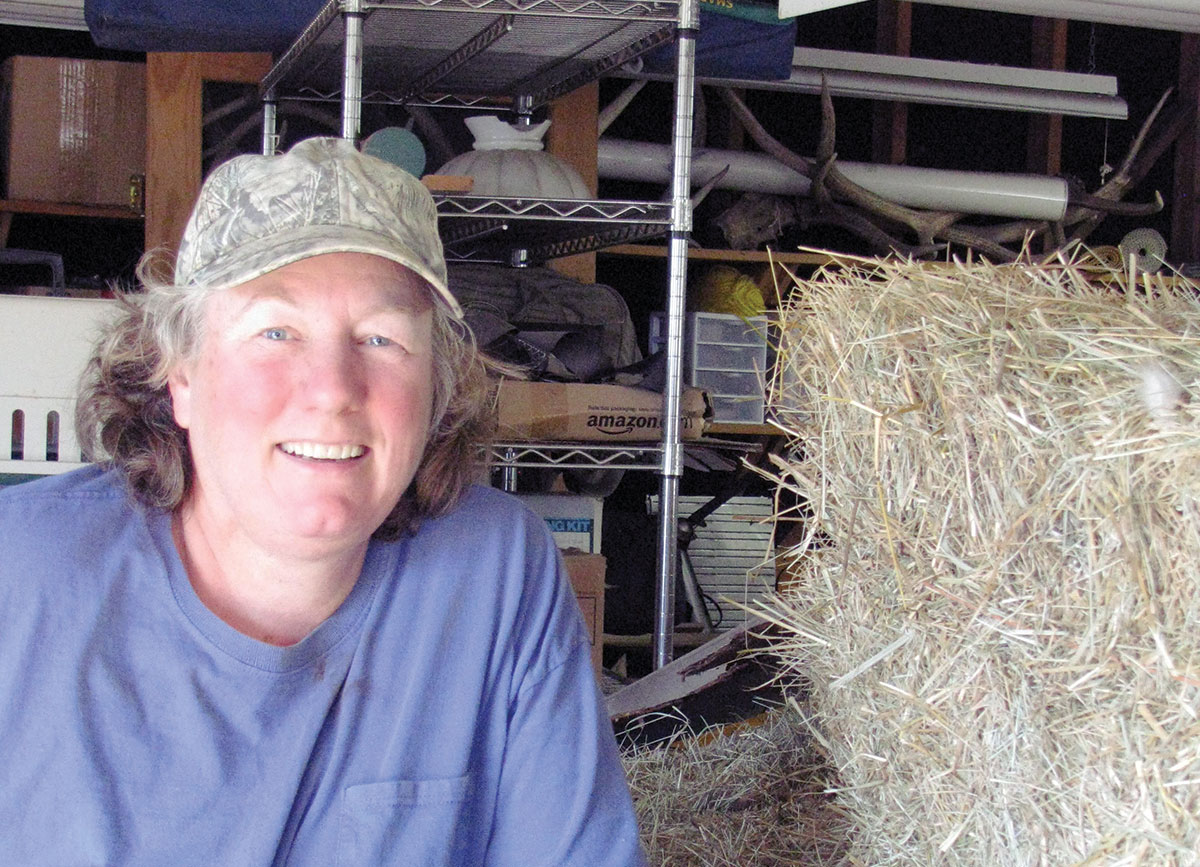
Ann Horsman moved to the Ozarks to begin her own farm seven years ago
Ann Horsman, owner of Meadowlands Farms, describes herself as “an army of one.” She has lived on her 34-acre farm east of Niangua, Mo., in Webster County, for seven years.
Ann is originally from Michigan, where she lived until she was 45. She worked as a sheriff’s deputy for 20 years there. Then she moved to Vermont and worked in a forensic laboratory for seven years. Upon retiring, she moved to Missouri.
“Vermont is very expensive. Unless you have a very good job, you can’t afford to live there,” she said. “The other thing is the winters are very long: I like to garden.”
She didn’t want to move back to Michigan.
“With the Great Lakes, you get overcast all the time,” Ann explained. “I wanted to stay Midwest, but somewhere reasonably priced and sunnier.” That’s how she ended up in Missouri.
Ann began farming while working in Michigan.
“It was something I always wanted to do,” she said. “Chickens were the easiest to start with. I had horses all my life. Chickens were the next easiest thing. I got a barnyard egg layers special from McMurry Hatchery. They came in the mail and from there it took off.”
Before she bought birds, Ann did her homework. She looked at different breeds of chickens.
“The first breed I saw, in literature, that laid a blue egg was an Araucana. They are so different from other chickens in the way they look that it also intrigued me,” Ann said. “They were very hard to find. It’s a very rare breed.”
The Araucana chickens don’t have a tail and on each side of their head they have tufts.
“They are the only breed with tufts. They lay blue-green eggs,” Ann said.
She has about 50 chickens now, but is getting ready to start hatching.
“Like any breed of animal, there’s a standard. So you breed to a certain standard,” Ann shared.
She has had success doing just that.
“I’m the national champion for two years in a row now,” Ann said. “I have been breeding and raising these birds for 15 years, and it’s taken that long to get where I want to be with my stock.”
Although Araucanas are a duel-purpose breed, Ann does not raise them as broilers. But she does process and pressure can several cockels every year.
These chickens are a very hardy breed.
“They’re very long-lived,” Ann said. “They don’t lay eggs when they molt, no chickens do, but I can have productive birds 12 to 15 years.”
Araucanas don’t have the same kind of heavy production as some other breeds, but for Ann it just makes more sense than raising new chicks every year and waiting seven months for production.
Ann also raises sheep. Like the chickens, the sheep are an unusual breed. She raises sheep called Soay.
“They are purebred, but there is no written pedigree on them,” Ann said. “They are very primitive sheep. Some folks think they’re goats, but they’re not. When people first domesticated sheep, this is what they ended up with. They are called a hair sheep because they molt. You don’t shear them.”
Right now she has 11 sheep, but will be getting lambs very soon.
“Some of them will twin, but most of mine do singles and I’m fine with that,” Ann said.
She has been raising Soay sheep for four years. The single reason she chose this breed over any other was their resistance to disease and parasites.
“They browse as good as goats. They won’t climb the fences,” Ann explained. “They don’t live to escape and demolish your garden. They don’t scream like goats. They are extremely hardy.”
In rams, proper horn growth is important.
“I have the genetics for that,” Ann said. “You don’t want rams whose horns are going to grow into their head. All of mine curl around and start to spiral out.” The ewes also have horns.
These sheep are not very tame. Ann said, “They are smart.”
This year Ann added rabbits to her farm.
“The reason I have the animals I have is because it’s small stock. I need animals I can handle by myself,” she said.
Ann does self-marketing. She hatches eggs until the end of May, and then she starts selling eggs. She uses Craigslist and Facebook.
“With the sheep, I end up selling live animals,” she said. “People just want them for their own farm, more than an actual food product. It’s the same with the Araucanas. I don’t market them as a meat animal, although you can use them for that. They’re really an egg layer.”
Ann is preparing for spring shows, which she said helps market her animals.
“That helps people find you and your market,” she said.







